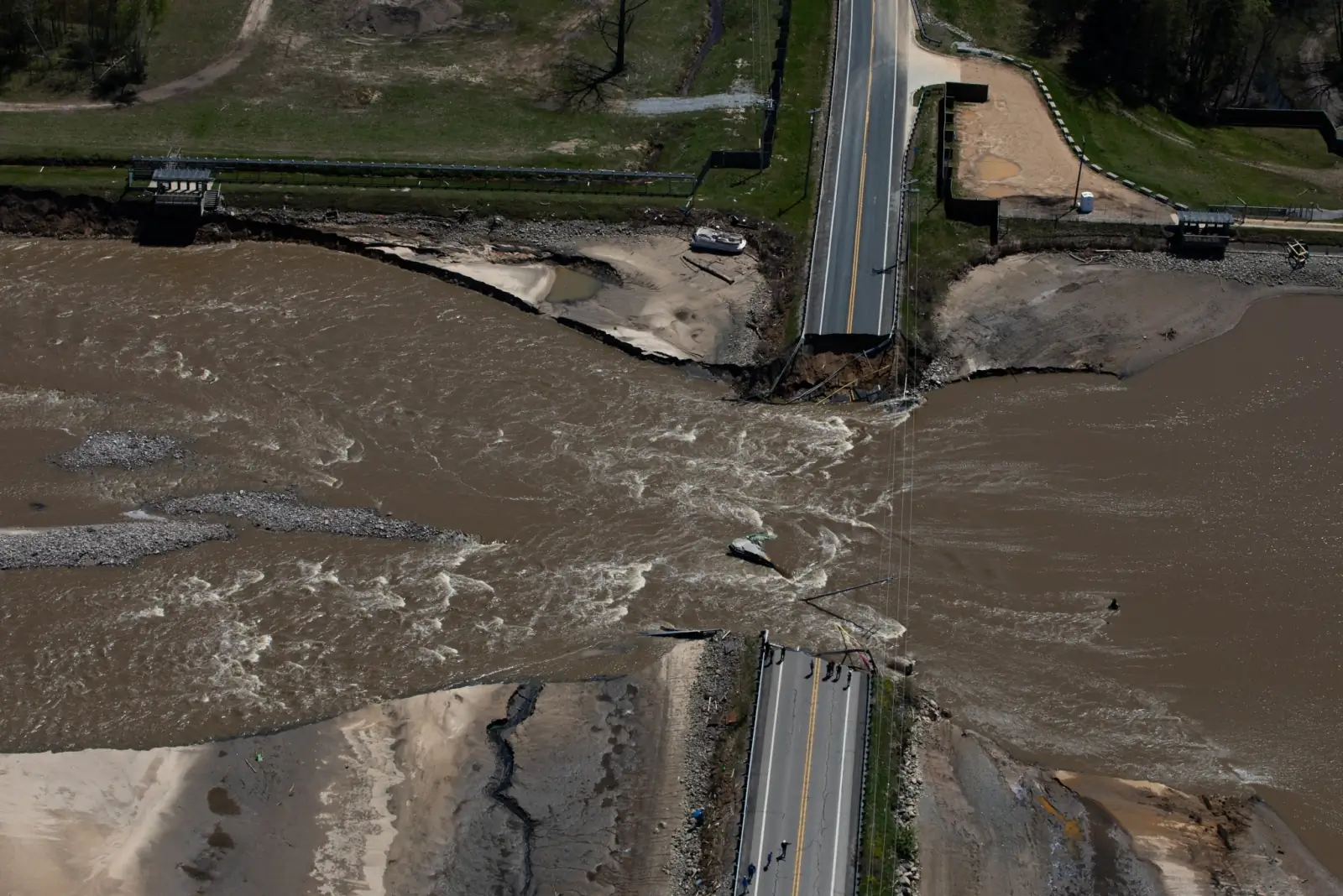Climate change is here to stay, and its impacts are creating different challenges for communities across Canada. From flooding to wildfires, the impacts of climate change can result in devastating damage to physical infrastructure and cause major disruptions to the supply chain and daily lives of residents. Rebuilding and recovering is often a slow and costly process. So, how can local governments better prepare to withstand more frequent and intense weather?
Climate adaptation and resiliency strategies enable local governments to build or upgrade community infrastructure so it can withstand the impacts of extreme weather or temperatures in a future where ‘extreme’ is actually the new normal. With climate changing at a pace 10 times faster than ever before, stewards of public infrastructure can’t rely on historical weather data and traditional approaches to form their planning assumptions. Local governments today need to look ahead to predict and prepare new, sustainable strategies for the future.
Climate adaptation and resilience planning
The Government of Canada released its strengthened climate plan, A Healthy Environment and a Healthy Economy in December 2020. As part of this plan, it committed to developing Canada’s first National Adaptation Strategy in partnership with provincial, territorial and municipal governments, as well as Indigenous Peoples and other key parties.
This commitment resulted in identifying new actions to build resilience and mitigate the impacts of climate change by:
- Translating scientific information and traditional knowledge into action
- Building climate resilience through infrastructure
- Protecting and improving human health and wellbeing
- Supporting particularly vulnerable regions
- Reducing climate-related hazards and disaster risks
Scheduled for release by the end of 2022, this national adaptation strategy will be a valuable resource to inform and support local governments and other organizations in pursuing their adaptation and resiliency efforts. This strategy, and others, are supported by record levels of capital investment at both the federal and provincial levels. Many local governments have already prepared, budgeted and prioritized adaptation and climate resiliency plans – while others, at their own peril, have done very little in this regard.
Resilience planning and resources
Author and futurist, Jamais Cascio summarizes the goal of resilience planning perfectly. He believes, “Resilience is all about being able to overcome the unexpected. Sustainability is about survival. The goal of resilience is to thrive.” This is something that local governments need to consider when re-evaluating community infrastructure. Can all built assets withstand changing climate and extreme weather events? Can the existing infrastructure continue to perform throughout its full design life? Does planned infrastructure include future weather considerations? Will essential services be compromised, and will transportation networks and supply chains be disrupted? Will public safety be at risk?
It’s a case of investing relatively little now to prepare for the inevitable or reacting to a weather event that is likely to result in greater, wide-ranging costs in the future. Local governments need to consider potential climate impacts specific to their geography, their capacity to respond to weather events, the resources available to improve resiliency measures, and their ability to normalize climate adaptation in day-to-day operations and services.
In addition to taking action themselves, local governments can also consider regional collaboration, as localized adaptation measures may have far-reaching, and potentially negative, impacts to neighboring communities. By including regional perspectives, local governments can create synergistic opportunities by strategically aligning with nearby jurisdictions, particularly when it comes to securing funding from higher levels of government or elsewhere.
Implementing climate adaptation and resiliency is a multifaceted journey. A recent publication by Environment and Climate Change Canada entitled Talking it Through: A Discussion Guide for Local Government Staff on Climate Adaptation suggests the following steps to get started:
- Research and initiate the climate adaptation process
- Identify climate change impacts and conduct a vulnerability and/or climate risk assessment
- Determine suitable actions, programs, policies and processes to adapt to the impacts of climate change
- Begin implementing actions and/or a climate adaptation plan
- Monitor and evaluate the implemented actions or climate adaptation plan
The activities that inform these steps are critical and may require substantial effort depending on regional interactions, organizational maturity, and the number of physical assets that a local government has within its purview.
Three key tasks all local governments or multi-asset organizations need to develop before they can get started are:
- An asset management framework
A detailed inventory of existing assets is the ideal starting point. Understanding the role and interrelationship of infrastructure types, and the broader systems that they support, facilitates prioritization, as does knowledge of each asset’s condition, remaining life and replacement value. Given that this is such a critical element to developing a solid adaptation strategy, local governments and organizations without an asset management framework, or the capacity or tools to implement one, are advised to seek external guidance and support. - An expert-informed climate risk assessment
With a prioritized list of assets in hand, local governments can then evaluate the impacts of climate risk on infrastructure that is deemed ‘high-priority’ or critical. Through a vulnerability assessment, asset owners can draw on the specialized expertise of climate scientists and infrastructure engineering professionals to identify and mitigate risk to vulnerable assets. The PIEVC Protocol is one of the more prominent and formal tools engineers use to assess infrastructure vulnerability and identify climate adaptation measures - A strong project governance framework
With a confirmed list of priority infrastructure adaptation projects established, the next step is to evaluate the capacity and ability of internal staff to take on this program of work. With multiple internal and external stakeholders typically involved in the implementation of a climate adaptation strategy, having a clear project governance framework is fundamental to its success. A project governance framework provides organizational structure across multiple teams to facilitate collaboration, accountability, and timely decision-making.
With these three steps, local governments are better informed and prepared to develop a strong climate adaptation strategy. Climate change impacts are not going to decrease anytime soon, but there are resources available to support organizations of all sizes as they take on this important issue. By investing in climate preparation and mitigation planning now, local governments are making the clear choice to adapt and overcome the challenges ahead.






